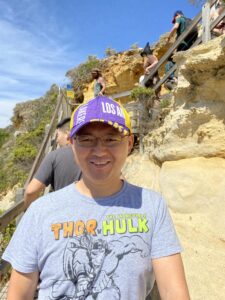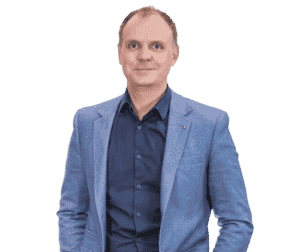Welcome Tanya Langhorne!
Data & Analytics Lead | Brisbane
We’re very excited to introduce Tanya Langhorne as our latest member of the IP team. Tanya is an excellent communicator with a strong combination of technical expertise and business acumen. Apart from adding to an already strong team, Tanya’s introduction also marks an expansion of IP’s data service offerings. Technologically we got things covered, but tying this together practically with strategic and cultural alignment will help organisations propel their data journey. Building trust in data, making better decisions, delivering outcomes – that’s our focus.
We’re delighted to welcome a Data & Analytics Lead onto the team. What prompted you to initially get into working with data/technology?
Curiosity. It’s my innate desire to understand why things happen the way they do and why decisions should be made the way they are. Mix that with my drive for efficiency – and it’s kind of a no brainer.
How long have you been working in this particular space and what’s your experience?
More than I’m willing to admit… close to 20 years. I started working in data when it still meant spreadsheets, powerpoints and bringing numbers off pieces of paper more than anything else. I’ve been involved in that journey at an enterprise level the whole way through. My experience has evolved from spreadsheets and to databases to embedded real-time customer models within core systems, and predictive & prescriptive analytics using ML/AI.
What technology have you been working with lately that really excites you?
My passion at the moment is Edge and TinyML, which is where I think the future is. TinyML in terms of its ability to control governance and data privacy but also its environmental efficiency. Not having to send everything back to a data centre is environmentally something we all need to start thinking about. Also, people’s personal data is everywhere, and data breaches are becoming more and more common, right? So the cool thing about Edge analytics and TinyML is we start to get benefits from these new advanced tools while minimising environmental damage and enabling data protection, all within supremely fast processes. Plus, a lot of these little tools are ubiquitous and cheap which makes them more accessible to companies and economies of all shapes and sizes. TinyML is starting to be used quite successfully in countries that would traditionally not see the benefits of technological advancements due to the cost limitations. From real time feedback on water quality to crop health analysis, and eye disease identification. The impacts are huge . In a really practical sense it’s making a huge difference, in the places that can benefit the most. I really feel TinyML is where we need to be playing as a society.
What are you looking forward to most this year?
I’m looking forward to seeing businesses really understand the value they can get out of these new amazing tools – like ChatGBT, for example. Figuring out the next step of how it can be used in a practical sense, how to embed it in your processes and strategies and make it really beneficial for a company. I think that’s really interesting. Companies are starting to think more innovatively and I know it can be really hard for a lot of businesses to do so, because we’re constantly in the weeds, the details. We’re forgetting to look forward. All of these new tools and new cool things that are hitting the media are making companies really start to look at these new advancements and that is super exciting.
What attracted you to this role and working with IP?
For me, it was definitely the people. I’ve worked with IP in the past, whilst working for a previous employer, and the people had a really good understanding of tying together technology, people and the strategic side of it which is not a common occurrence.
As the data and analytics lead, what are you hoping to achieve this year with the data and analytics practise in IP?
I want to build an excitement and breadth of understanding about how data and analytics ties everything together and how it can be used to make impactful decisions more broadly. It’s not just feeding data in systems, or creating dashboards – I want to show the actual line of sight on the amazing outcomes that data and analytics can achieve. In the market there are not enough examples of strategically tying together technology with the rest of their organisational structures. This often makes it difficult for companies to move forward in their data journey,and to really see those benefits.
I want us to use the tools we have, with our incredible people and their well rounded knowledge to enable companies to move forward with renewed pace, to find those efficiencies and ways of adding real, tangible value to their customers- whilst still enabling a high level of governance. I think we are in a unique position to be able to do that because we have so many technically talented people. We bring in a strategy, we bring in knowledge and we bring innovation. That’s what I’d like to see in my data and analytics work this year.
What’s the biggest return you’ve seen in your work to a business, has it been increasing revenue? Solving a big problem? What’s the most exciting piece of value that you’ve seen?
If I look at it super broadly, the biggest return I have seen is what data and analytics – when it’s done right – can do for culture. It’s not processes and tech that run companies, it’s people. And getting people from an organisation who all want success to drive towards the same thing and actively work towards the same outcomes will give you a bigger ROI than any system you can implement. Even little differences like matching terminology -everyone knowing what a customer is and how it’s measured – it fundamentally changes conversations. It creates this cohesive, collaborative culture of everyone talking the same language using the same words fed from the same source, heading in the same direction. I’ve seen it be that unifying factor across the culture, I know it works that way. To me – that’s the power of data and analytics when it’s done well.
And lastly, what do you most like to do when you’re not at work?
Run, a lot. Really long distances on really crazy terrain with random animals trying not to get eaten.
Where specifically were you trying not to get eaten?
I was running in the middle of the night out somewhere on the Brisbane Valley Rail Trail. It was really dark and there was a big herd of about 70 angry looking cows with their calves. I don’t know if you know anything about cows when they’re with their babies – they’re very protective! It’s a known thing that if you see a cow with a baby you very slowly back away. There were so many I couldn’t go around them and they weren’t moving and so it was that life-flash-before-my-eyes thing. I was asking myself, do I walk through the middle of a herd of baby cows where I can be trampled to death and no one in the world knows where I am right now because I’m in the middle of nowhere… or do I wait for them to move? I gave them 10 minutes, they just sat there moo-ing at me so I decided to call my husband (as you do) and said “Just so you know, in case I get trampled…”
Imagine that cause of death: trampled by cows. What a way to go!


